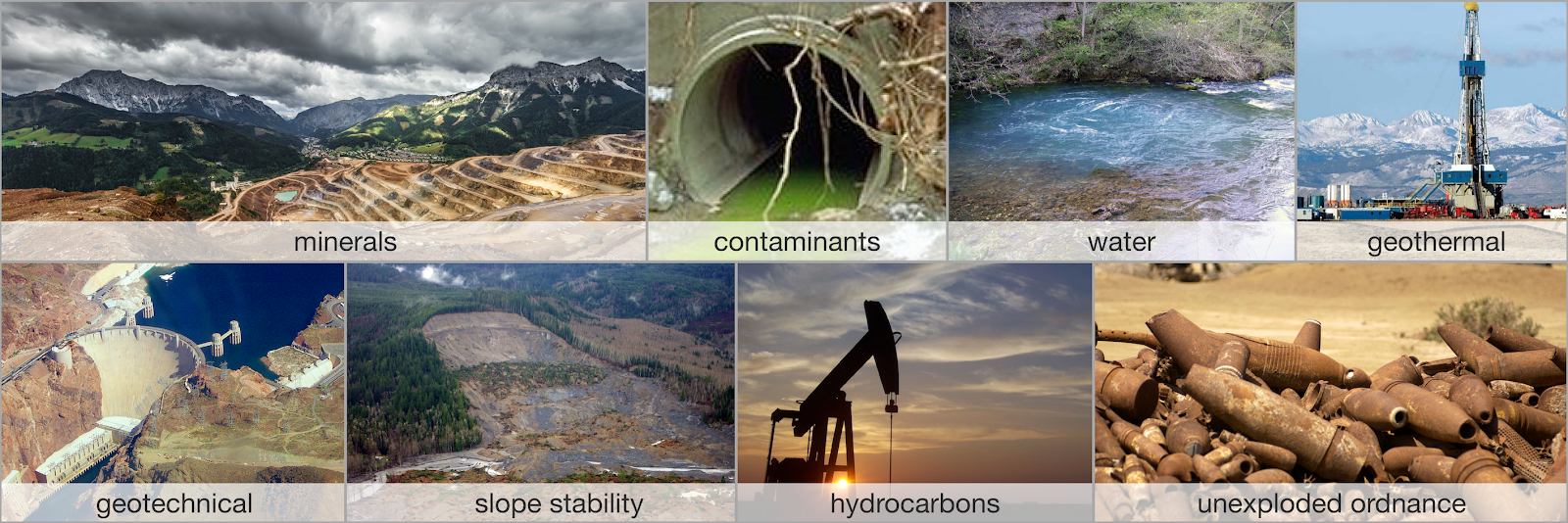Geophysical Inversions
To understand our physical world we resort to experiments. Energy is input to an unknown system and data are recorded. The goal of inversion is to extract information about the system. In this chapter we look at the general inverse problem and, to provide context, present it within the discipline of geophysics. The procedures however are applicable to experiments in all areas of the physical sciences.
In today’s world we are faced with many problems in which geophysics can play an important role. Some of these are visualized in the following Figure %s and include: (a) finding resources (minerals, water, hydrocarbons, geothermal energy); (b) environmental problems (contaminants, salt water, UXO, permafrost), (c) geotechnical (tunnels, infrastructure, slope stability); (d) natural hazards (earthquakes, volcanoes, tsunami); (e) subsurface storage (radioactive waste, CO2 sequestration, water).

Figure 1:Examples of geophysical experiments: (a) finding resources (minerals, water, hydrocarbons, geothermal energy); (b) environmental problems (contaminants, salt water, UXO, permafrost), (c) geotechnical (tunnels, infrastructure, slope stability); (d) natural hazards (earthquakes, volcanoes, tsunami); (e) subsurface storage (radioactive waste, CO2 sequestration, water).